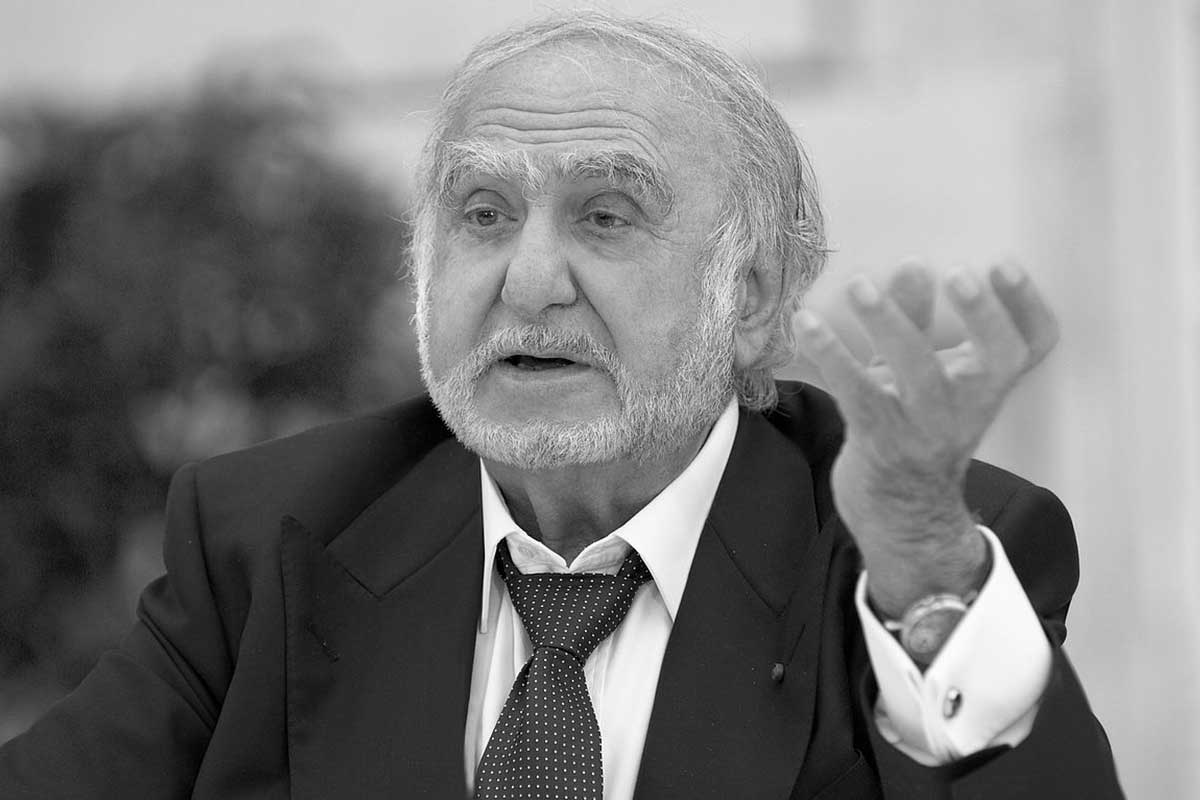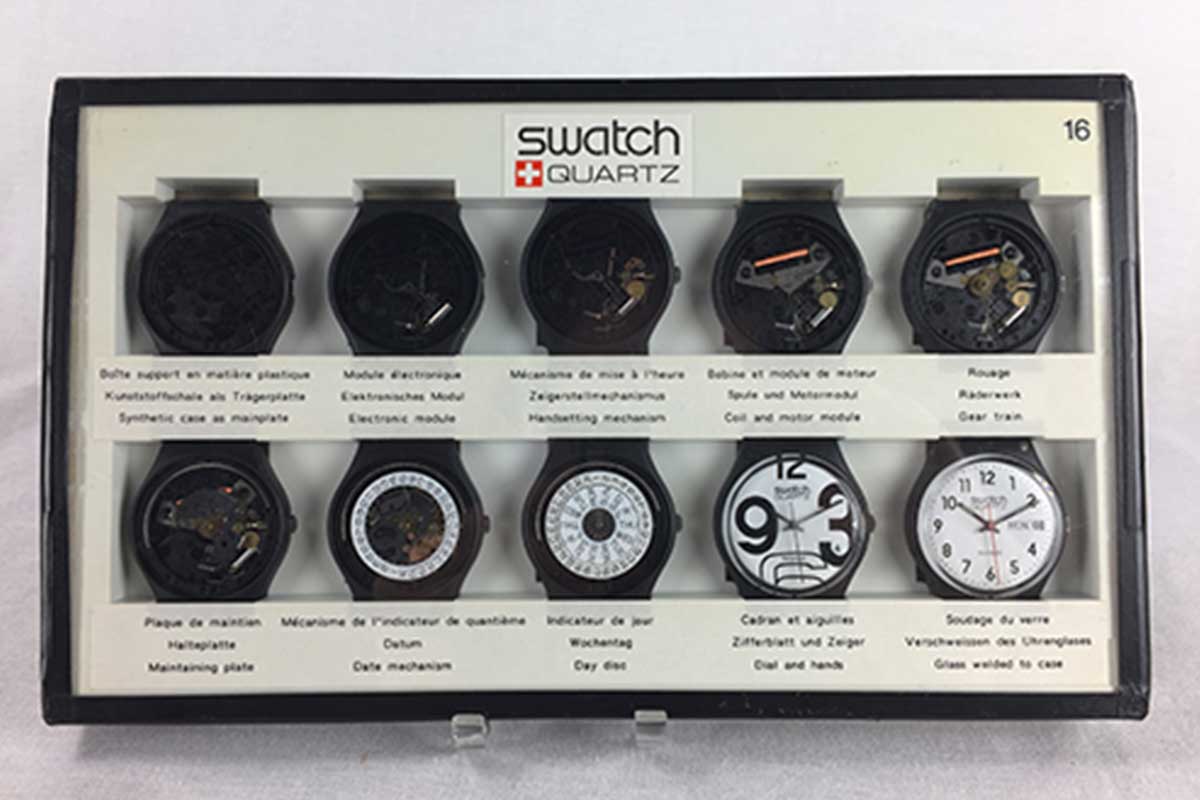
“Should you find yourself in a chronically leaking boat, energy devoted to changing vessels is likely to be more productive than energy devoted to patching leaks.”1 These wise words were spoken by Warren Buffet, a man whom many know as one of the most successful investors in the world. Called the “Oracle of Omaha,” Buffet accomplished so much with his perseverance and willingness to change and adapt in his pursuit of success in the face of adversity. Nicholas G. Hayek, the founder and “savior” of Swatch, implemented such wisdom as he took Swiss watchmaking from a failing institution to the largest watchmaking company of the world, The Swatch Group.
When the world’s first quartz watch, the Beta 21, was created by Centre Electronique Horloger (CEH) of Neuchatel, the market for handcrafted mechanical movements sharply decreased. The crystal of quartz was used to oscillate at a precise frequency in response to an electrical current. Watchmakers were realizing the seemingly unlimited opportunities for innovation that electronics in general and computer-aided design and manufacturing in particular would give.
Despite the initial high costs of quartz watches, companies began using them. The Swiss—always a leader in the industry—took the lead in developing the quartz watches and were well on their way to dominate this emerging niche in the watchmaking market. It is surprising that that never happened. The companies had to decide to either continue to create the mechanical watches with higher profit margins or adapt and implement the new technology.
According to James Breiding, author of the book Swiss Made, “the assumption had always been that the precision of a watch was reflected in its price. This thinking should have meant that the greater the accuracy of quartz watches would always make them more expensive than mechanical watches and, consequently, they would be produced in a relatively low volume.”2 While the Swiss companies held on to their methods, Japanese and Hong Kong companies began to develop affordable electronic watches. The Asian competition took the Swiss companies from about a 50 percent share in the watch industry in the 1950s to a mere 20 percent by the early 1980s.

Also known as the “Quartz Crisis,” this Asian mass production of affordable digital watches in the 1970s resulted in the almost certain demise of Swiss watch companies. Société Suisse pour l’Industrie Horlogère (SSIH) and Allgemeine Schweizerische Uhrenindustrie AG (ASUAG) were among those that felt the sharp change of the ever-evolving world market. Their resistance to change and their failure to manage and restructure their plan of action led to their collapse. In spring of 1981 the discovery of SSIH’s massive debt to about 30 banks and 20 other companies forced them to persuade creditors to forego part of their debt claim altogether and convert a further proportion into new share capital.
With little to no effort to inspire productivity, ASUAG (Longines, Certina, and Rado) and SSIH (Omega, Tissot, and others) ultimately failed to compete with their more lucrative opponents and faced insolvency. Swiss banking institutions urged the two companies to combine efforts to attempt to regain a foothold in the watchmaking enterprise through a merger. SSIH was reluctant to merge with ASUAG, but because of market losses of about $50 million in 1982 through their own Omega brand, they were open to recouping their losses, which was a result of trying to sell a high number of products at a low price. With the coercion of the banks, an independent firm of consultants examined the business to determine remaining assets. Hayek Engineering, owned by Nicholas G. Hayek, agreed to run an assessment on the Swiss companies.
Hayek was well known in the financial community and was especially known for his tributes in the considerable savings of the Swiss military. The Lebanese-born Hayek was popular because of his successful reconstructions of large companies, turning them from low to high level profit organizations. After thorough research, Hayek also agreed that a merger of ASUAG and SSIH was the most proficient route for the future success of the Swiss watch market. Hayek also contributed his own capital. Backed by a board of investors who put their trust entirely in Hayek, he continued the project.
In 1983 the merger was well underway and Hayek immediately began the reconstruction process. The merged companies took the title of Societé Suisse de Microélectronique et d’Horlogerie (SMH), which later became The Swatch Group. Hayek realized that these companies had been poorly run, so in 1986 Hayek became CEO of SMH.
Hayek found a few investors for what looked like an obsolete industry for an enterprise that was losing money in high volume. Fanz Wassmer, who made his money in cement, took the risk and trusted in Hayek’s ideas. To satisfy the banks, Hayek agreed to control 51 percent in WAT Holding, a company that held a majority share in SMH. From that moment on, Hayek controlled SMH.
Hayek began competing at the low end of the market so that SMH would control that market. SMH launched the new “slimline” model, developed by Ernst Thomke, whose vision was to radically reduce the thickness of watches to less than that of the Japanese makes. According to Breiding, “a technique was borrowed from an old patent that enabled watch movements to be built directly into the housing, which removed the need for the movement casing.”2
With the help of Thomke’s no-nonsense Swiss problem-solving, geniality, managerial intuition, and ability to deal with big companies, the Swatch was born. Hayek and Thomke made a great team: Hayek had the vision and Thomke made it happen. To some, the pair brought about the rebirth of the watch industry. Others responsible for the creation in the initial project were Jacques Muller, Elmar Mock, Hans Zaugg, and Franz X. Sprecher.
Omar Calabrese, in his article “Swatch After Swatch,” explains the derivation of the name “Swatch.” “Initially, they were called “S’-Watches,” which referred to the two fundamental concepts in its launch: its origin (S for Swiss) and the “second watch” (S for Second). Franz Sprecher instinctively eliminated the hyphen and apostrophe. They had to think of the difficulty in pronouncing the brand name.”3 Of the other possible names considered, the name “Swatch” had an immediate semantic appeal, especially because it was a cross between Swiss and Watch. The search was underway for suitable distributors.
It was quickly realized that it was not possible to change consumers’ tastes all at once. People wanted a classic form: a fashionable watch, but classic. The Swatch was not just a utilitarian object but, in its form and design, an “objet d’art” as well. In America in 1984, campaigns were publically launched and the creators of Swatch were “lionized like child prodigies,” as told by Sprecher himself in an article written by Christoph Schifferli. He says, “business was booming. Every young executive had to have a Swatch as a status symbol.”4
It was the combination of design, technology, marketing, and distribution that made the Swatch an extraordinary enterprise. It took less than three years for the trend to be realized. With the company slogan “Fashion that ticks. You can show off your Swatch, you’re proud to own it,” Swatch was ready to succeed. Schifferli explains in his article, “with a modest budget and over an extremely short period of time, in making the leap from a local market to a larger one and, eventually, to a worldwide one, they succeeded.”5 Eventually, thanks to American tourists, the Swatch conquered even the Chinese market.

In the 2010 article by William Dowell, he explains the status of The Swatch Group: “Today, China manufactures around one billion watches a year, but those watches sell for roughly $2 a piece. Switzerland exports around 26 million watches a year, but according to the Federation of the Swiss Watch Industry, the average price is more than $563 per watch. In terms of value, Switzerland holds 55% of the world’s market. By 2008, Asia was absorbing 46% of Switzerland’s watch exports. China exported $2.7 billion worth of watches. Switzerland’s share of the market was $15.8 billion.”6 Sadly, Nicolas G. Hayek, the man who took a gamble on the company some 30-plus years ago and won, unexpectedly died of heart failure at the age of 82 on June 28, 2010.
His death shocked the watchmaking community, but it still continues. As the result of a unanimous vote of the board of directors on June 30, 2010, Hayek’s daughter, Nayla, had usurped the position as the new chairperson. Much to the wisdom of Hayek, prior to his death, he had been training Nayla to take over in the event of his death.
Nicolas G. Hayek, in his article, One, a few, a hundred million, wrote, “It is the most fascinating aspect of something that, born as a technological product, has taken on the extraordinary dimension of an accessory, a complement to the personality. It speaks of itself and it speaks of its wearer. It amazes, and it will go on amazing. It is energetic, alive, irresistible, and ungovernable. Fascinating, isn’t it?”7
Notes